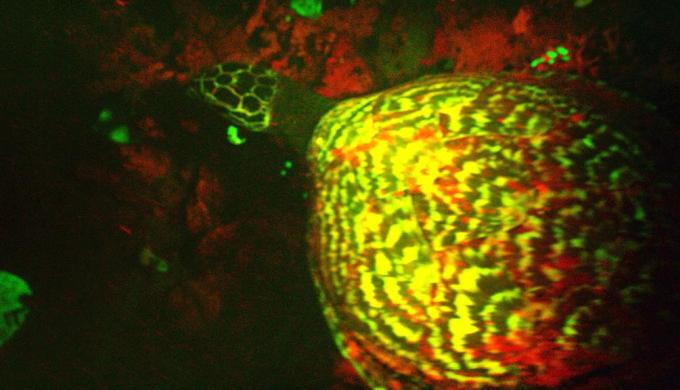NATIONAL GEOGRAPHIC - Scientists diving recently near the Solomon Islands made an illuminating discovery: The first biofluorescent reptile ever recorded.
Yes, this sea turtle is glowing neon green and red. No, it's not radioactive.
The critically endangered hawksbill sea turtle is the first reptile scientists have seen exhibiting biofluorescence — the ability to reflect the blue light hitting a surface and re-emit it as a different color. The most common colors are green, red, and orange.
Biofluorescence is different from bioluminescence, in which animals either produce their own light through a series of chemical reactions, or host bacteria that give off light.
Corals fluoresce, and recent research has found the ability in a number of fish, sharks, rays, tiny crustaceans called copepods, and mantis shrimp. But researchers never expected to find it in a marine reptile. (See pictures of other animals that glow.)
"I've been [studying turtles] for a long time and I don't think anyone's ever seen this," says Alexander Gaos, director of the Eastern Pacific Hawksbill Initiative, who was not involved in the find. "This is really quite amazing."
Marine biologist David Gruber, of City University of New York, was in the Solomon Islands in late July to film biofluorescence in small sharks and coral reefs.
During one night dive, his team was on guard for crocodiles that frequent the area, "and there came out of nowhere this fluorescent turtle," says Gruber.
It looked like a big spaceship gliding into view, he recalls: An alien craft with a patchwork of neon green and red all over its head and body.


